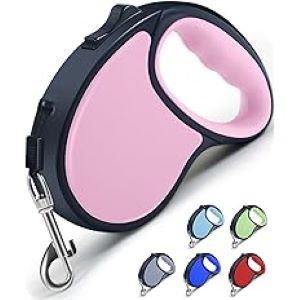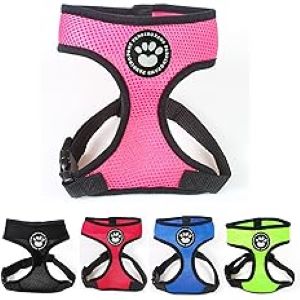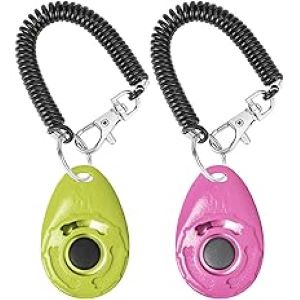Have you ever unintentionally performed a comical dance routine with your furry friend while attempting to maintain control during a walk?🐶 If you’re nodding in agreement, fear not, we’re about to untangle the question: ‘How to hold a dog lead?‘
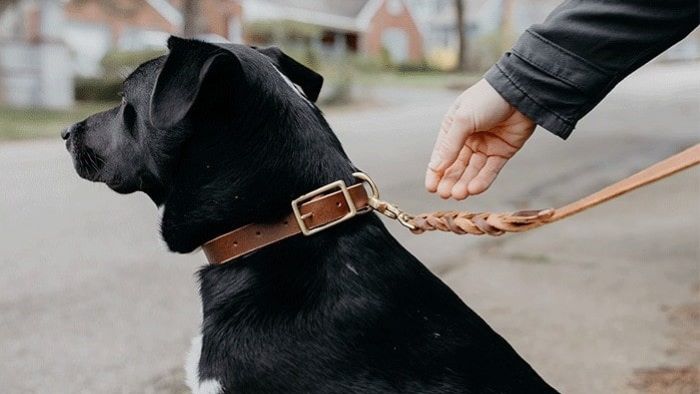
Along the way, we’ll address walking techniques and offer valuable insights to help you become a lead-handling pro. Let’s embark on this informative journey to make your dog walk a cakewalk!🚶♂️
You Might Also Like:
How to Hold a Dog Lead?
“A walk can make a dog very happy. They love to check out the sights and smells and will really look forward to spending time with you. A dog that doesn’t receive sufficient exercise can easily become bored or destructive”, say the experts at Better Health“
When it comes to walking your canine companion, the lead is your vital tool that ensures both your safety and your dog’s. Let’s explore the diverse world of dog leads, including:
- Standard Leashes: These are the most common and straightforward type of leash. Typically made of nylon or leather, they come in various lengths, but six feet is the standard. They offer control and are suitable for most dogs. 🐕
- Retractable Leashes: Imagine a leash that can extend and retract with the push of a button—these are retractable leashes. They allow your dog more freedom while maintaining some control. However, they require extra vigilance to prevent entanglement and accidents. 🪢
- Harness Leashes: Some dog owners prefer using harnesses in conjunction with leashes. They distribute pressure more evenly across the dog’s body, which can be helpful for dogs prone to pulling or those with neck sensitivities. 🐶
- Adjustable Leashes: These leashes come with multiple attachment points, allowing you to change the length and style of your leash quickly. They offer flexibility for different walking situations. ↕️
- Bungee Leashes: These leashes have a built-in shock-absorbing feature that reduces the impact of sudden movements or pulls, making walks more comfortable for both you and your dog.
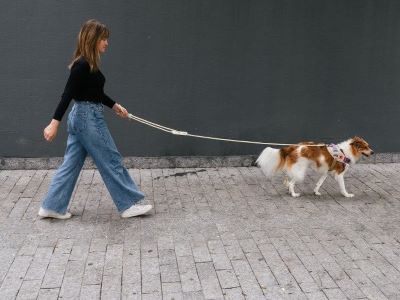
Choosing the Lead
Choosing the right leash for your dog involves considering their size, temperament, and walking behavior, Let’s see them in detail:
- Dog Size: Smaller dogs may benefit from lighter, thinner leashes, while larger, stronger dogs might require thicker, more durable options. 🐕🦺
- Dog Behavior: If your dog is prone to pulling or has a tendency to be reactive, you might opt for a harness or a bungee leash to minimize strain on their neck.
- Walking Environment: Consider where you plan to walk your dog. A retractable leash could be great for open spaces, but a standard leash might be better in busy urban areas. 🏙️
- Safety: Always prioritize safety. Ensure that the leash you choose can securely attach to your dog’s collar or harness, preventing accidental detachment.
Holding the Leash
Holding the leash might seem straightforward, but doing it correctly can make a world of difference in your dog-walking experience. Proper hand positioning is the foundation of leash control[1]. Here’s how to do it:
- Dominant Hand Placement: Your dominant hand should hold the end of the leash. This is the hand that will guide your dog and make commands. 🖐️
- Support Hand Placement: Your support hand should grip the leash closer to your dog. This hand provides additional control and stability.
- The Basic Grip: This is the simplest grip, where you hold the leash between your thumb and fingers, keeping it snug but not overly tight.
- Loop Grip for Added Control: To enhance control, create a small loop in the leash with your support hand. Pass the loop over your dominant hand’s wrist. This technique offers quick, responsive control when needed.
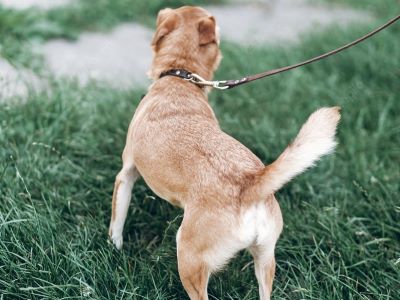
- Relaxation: Avoid gripping the leash too tightly, which can lead to discomfort and tension. Relaxed hands help you maintain a calm demeanor, which your dog can pick up on.
- Firmness: While staying relaxed, your grip should be firm enough to maintain control. Be prepared for unexpected movements or distractions, ensuring that you can quickly guide your dog back on track.
Lead Length and Tension
The length of your dog’s leash plays a significant role in controlling their movements and ensuring a safe and enjoyable walk.
- Shortening the Leash: In situations where increased control is necessary, such as walking through crowded areas, near traffic, or encountering other dogs, it’s essential to shorten the leash. To shorten the leash, simply gather the slack in your support hand, allowing for minimal lead between you and your dog. 🐕🦺
- Lengthening the Leash: When you’re in open spaces or designated off-leash areas, lengthening the leash can give your dog more freedom to explore while still maintaining control. However, it’s crucial to remain vigilant and be prepared to adjust the leash length if the situation changes suddenly. 🐶
- Monitoring Leash Tension: A loose leash signifies that your dog is walking beside you without pulling or dragging. When your dog pulls on the leash, it creates tension, which can lead to discomfort and frustration for both of you. In response to anxiety, be patient and use gentle cues to encourage your dog to walk without pulling.
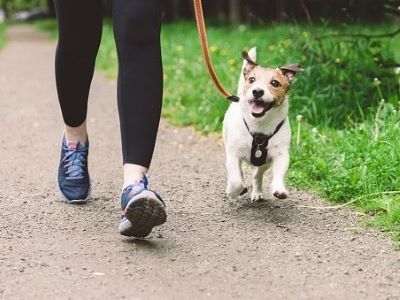
Walking Techniques
To master the art of basic loose leash walking, encourage your dog to walk calmly beside you without pulling. Use a relaxed but firm grip on the leash and practice consistent, gentle cues to guide your dog’s behavior.
One common challenge is a dog that pulls on the lead. To learn how to stop dog pulling on lead, consistency and positive reinforcement are key
“Engage in training exercises like “heel” commands and directional cues to help your dog understand the desired walking behavior. Consistent practice, patience, and positive reinforcement are key to success”, suggested The Animal Humane Society.
Reward your dog with treats, praise, and affection when they walk on a loose leash. Positive reinforcement creates a strong incentive for your dog to continue the desired behavior and strengthens your bond during walks.
Special Situations
Despite our best efforts to take precautions, unexpected situations can still appear. Let’s explore how we can effectively respond to some of these circumstances:
Walking Multiple Dogs
Walking multiple dogs can be both rewarding and challenging. Use separate leashes for each dog to maintain individual control. Focus on leash training and reinforce commands for walking as a pack.

Be prepared for potential tangles, and consider using a waist leash for added convenience and hands-free walking.🐕🐕
For added control, some people prefer using the best double ended dog lead when walking two dogs at once. The dual handles allow both dogs to be handled simultaneously.
Crowded or Public Places
Crowded or public places require heightened awareness. Keep your dogs on shorter leashes to ensure close control. Practice recall commands diligently.
And be prepared to divert from crowds if necessary to avoid stress or confrontation. Always clean up after your dogs💩 to maintain a positive image of responsible pet ownership.
Be aware of weather conditions as wet or icy leashes❄️ can be slippery. Adjust your grip to maintain control.
Off-Lead Training and Commands
Off-lead training requires a strong foundation in recall commands. Start in a controlled, safe environment, and gradually progress to off-leash areas. 🎾
Ensure your dogs respond reliably to recall cues before allowing off-leash freedom. Use high-value treats and positive reinforcement to reinforce their recall skills.💯
Maintain visual and verbal contact with your dogs when they are off-leash, prioritizing their safety and the safety of others.
FAQs
What Hand Should You Hold a Dog Lead?
Hold the lead in your left hand and treats in your right hand. Use the treats to lure your dog round to your right-hand side so they are standing, facing the same direction as you. The lead should be crossing over your body and held loosely with your left hand only.
How to Hold a Dog Lead?
Hold a dog lead by placing your dominant hand at the end of the leash for control, while your support hand grips it closer to your dog for added stability. Maintain a relaxed but firm hold to ensure effective guidance during walks.
Is Ok to Always Walk a Dog on a Lead?
It’s a misconception that dogs can only enjoy off-lead exercise – plenty of dogs need to be kept on a lead for health or behavioral reasons and they still get the exercise and mental stimulation they crave.
Why Do Dogs Put Lead in the Mouth?
So, just like a child jumping out of his or her seat at school, your puppy pulls at the leash in an effort to be free. Older dogs may also mouth or tug on their leashes in an effort to exert control or to rebel against restrictions.
Conclusion
In dog walking, there’s a saying: “Expect the unexpected, and then expect your dog to do the opposite.” While we’ve covered some lead-holding techniques and strategies, it’s important to remember that every dog is unique.
Even if you are of how to hold a dog lead like a pro, there will inevitably be those moments when your dog decides to chase a squirrel🐿️ or take an impromptu mud bath. 🛁
So, lead up, step out, and embrace the dog-walking adventure, because no matter how many surprises may come your way, the joy of being a dog’s faithful companion, while knowing how to hold a dog lead🐶 with style, will always outweigh the few lead tangle or puddle jump. 🐾
Check our guide on “when to let dog off lead” for guidance on off-lead walking.
References:
- Preventing dog walking injuries. (n.d.)- RUSH
